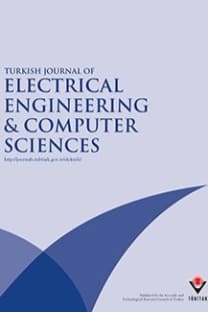Wind Power, Distributed Generation: New Challenges, New Solutions
Wind generation, distributed generation, computational intelligence
Wind Power, Distributed Generation: New Challenges, New Solutions
___
- H.L. Willis, Power Distribution Planning Reference Book, Marcel Dekker Inc., New York, 1997. ISBN: 0-8247- 0098-8.
- V. Miranda, C. Monteiro, “Fuzzy inference and cellular automata in spatial load forecasting”, in Proc. IEEE PES Winter Meeting., Singapore, Dec 2000.
- C. Monteiro et al., The SOLARGIS handbook – guidelines for the elaboration of regional integration plans for decentralized electricity production with renewable energies, ed. European Commission, project SOLARGIS, JOULE programme, 1996.
- I.J. Ramirez-Rosado et al, “Powerful planning tools”, IEEE Power & Energy Magazine, vol.3, no.2, pp.56-63, Apr 2005.
- V. Miranda, C. Monteiro, I.J. Ramirez-Rosado, “Negotiation Aid System for Promotion of Distributed Gener- ation and Renewables”, Proceedings of IEEE Transmission and Distribution Conference and Exhibition: Asia PaciŞc, Yokohama, Japan, Oct 2002.
- N. Hatziargyriou et al., “The CARE system overview: advanced control advice for power systems with large scale integration of renewable energy sources”, Wind Engineering, vol. 23, no. 2, pp. 57-68, 1999.
- N. Hatziargyriou et al., “MORECARE overview”, Proceedings of MedPower 2002 – 3rdMediterranean Confer- ence and Exhibition on Power Generation, Transmission, Distribution and Energy Conversion, Athens, Greece, 2002.
- V. Miranda, N. Fonseca, “EPSO – Evolutionary Particle Swarm Optimization, a New Algorithm with Appli- cation in Power Systems”, Proceedings of IEEE Transmission and Distribution Conference and Exhibition:Asia PaciŞc, Yokohama, Japan, Oct 2002.
- R. Billinton, R. Karki, ”Application of Monte Carlo simulation to generating system well-being analysis”, IEEE Trans. on Power Systems, Vol. 14, No. 3, pp. 1172-1177, Aug. 1999.
- A.M. Leite da Silva et al, “Application of Monte Carlo simulation to generating system well-being analysis
- considering renewable sources”, Proceedings of PMAPS 2004, International Conference on Probabilistic Methods
- Applied to Power Systems, Iowa, USA, Sept. 2004.
- ISSN: 1300-0632
- Yayın Aralığı: Yılda 6 Sayı
- Yayıncı: TÜBİTAK
Controlling Rail Potential of DC Supplied Rail Traction Systems
Mehmet Turan SÖYLEMEZ, Süleyman AÇIKBAŞ, Adnan KAYPMAZ
Digital Fractional Frequency Synthesizer Based on Counters
Wind Power, Distributed Generation: New Challenges, New Solutions
An Adaptive Feedforward Amplifier Application for 5.8 GHz
Engin KURT, Osman PALAMUTÇUOĞULLARI
The Effect of Collector Doping on InP-Based Double Heterojunction Bipolar Transistors
Serkan TOPALOĞLU, Jörn DRIESEN, Werner PROST
Statistical Model of Hot-Carrier Degradation and Lifetime Prediction for P-MOS Transistors
Fırat KAÇAR, Ayten KUNTMAN, Hakan KUNTMAN
State-Space Synthesis of Current-Mode First-Order Log-Domain Filters
